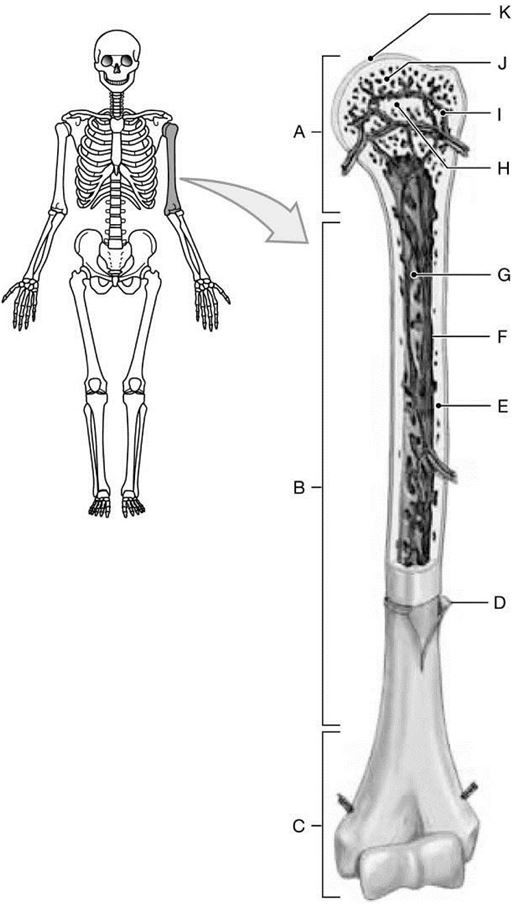What is located at structure G?

A) marrow
B) canaliculi
C) cartilage
D) adipose tissue
E) fibrous connective tissue
A) marrow
You might also like to view...
The abdominopelvic quadrants are formed by passing one horizontal and one vertical line through the
A. patellar region.?B. umbilicus.?C. antebrachial region.?D. gluteal region.?E. crural region.
Which statement comparing the autonomic and somatic nervous systems is not true?
A. Both the autonomic and somatic divisions carry motor fibers. B. The somatic motor division is strictly voluntary and the autonomic division is completely involuntary. C. The primary effectors of the ANS are viscera of the abdominal and thoracic cavities in contrast to the somatic motor division, which targets skeletal muscles. D. The somatic motor division requires one neuron to reach an effector in contrast to the ANS, which requires two neurons to cause an effect. E. Both the somatic motor division and the ANS are categorized as part of the peripheral nervous system.
Humans can see several thousand shades of color but have cone photoreceptors that are sensitive to only three (perhaps four) wavelengths of light. What is the best explanation for why we see so many colors?
A) Color perception is achieved by activation of various combinations between the three cone types. B) Color perception is dependent on the millions of rods as well as cone photoreceptors. C) Shades of color are purely psychological and learned by association with age, infants only seeing in black and white. D) Colors are added and enhanced in the primary visual cortex of the brain.
Sperm make up just 10% of semen volume.
Answer the following statement true (T) or false (F)